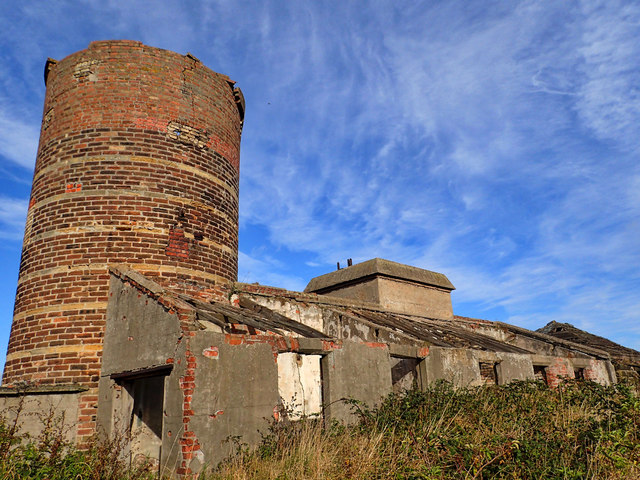Skelton Park Pit Upcast Shaft

-
Description
"Very little remains of Cleveland ironstone mines. It was second only to coal as the UK's biggest extractive industry. Ironstone had been mined in the Cleveland Hills since the 12th Century when primitive furnaces called bloomeries were used to melt the iron out of stone gained from rock outcrops along the dale sides. But it was the discovery of good quality ironstone in 1850 in the Eston hills which provided to kick start to an industry upon which Teesside and Cleveland was built. Sadly many of the mining sites have been cleared to be turned into industrial parks or just left as waste ground. Skelton Park is an exception. It's on private land next to a working farm. No Public Right of way passes through it. Consequently the many building have escaped being demolished or simply trashed by the generations local teenagers. The buildings are now considered to be the most complete and best preserved of the Cleveland ironstone mines. Skelton Park was one of a pair of mines, the other being Skelton Old Shaft, opened by the Bell Brothers in 1872. At its peak in 1881 it had a payroll of 300. Ironstone was transported by a branch line to the North Eastern Railway at Slapewath and on to the Bell Brothers' furnaces at their Clarence Ironworks. Obviously the wooden headgear has long gone but the range of brick and stone buildings surviving is substantial. The winding house, boiler pump house, power house, ambulance room, time office, blacksmith’s and joiner’s shops, saw mill, the saddler’s shop, the secondary winding engine shed and provender house (for storage of feed for the pit ponies). The photo shows the Schiele fanhouse building with its upcast shaft. Notice the different coloured bricks at the top which date from when it was converted to be winding shaft as well as just for ventilation. The shaft itself was 378ft deep. Nearby is the down cast shaft. The mine was electrified in 1910 and many modern features introduced. This is a great site and deserves preservation and is certainly worth a visit. From 1923 the mine was operated by Dorman Long & Co until 1938 when the mine was closed. Although the buildings are considered good they are suffering from the passage of time. Nature is reclaiming the site. Preservation of the buildings to prevent further deterioration is currently being undertaken by the volunteers of the Cleveland Mining Heritage Society." Photo by Mick Garratt, 2016. -
Owner
Mick Garratt -
Source
Geograph (Geograph) -
License
What does this mean? Creative Commons License
-
Further information
Link: http://www.geograph.org.uk/photo/5164539
Resource type: Image
Added by: Peter Smith
Last modified: 8 years, 6 months ago
Viewed: 1316 times
Picture Taken: 2016-10-17 -
Co-Curate tags









